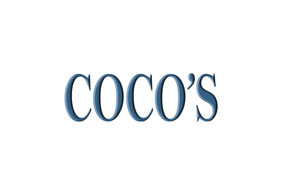As a business owner, you always have to stay ahead of your competition. Part of that is by being at the forefront of new ideas to bring in more business. We are talking about digital marketing, one of the most effective forms of marketing in this day and age.
Over the years, we have seen many digital marketing trends that have influenced how we market products online. These changes have been contributed to by changing consumer preferences, technology, and the diversification of web-based channels.
In 2024, these three aspects had a lot of impact on digital marketing. As a result, we have noted a lot of common themes in the space. This is what we’re calling the digital marketing trends of the year.
In this article, we are going to highlight the top five that we have observed. Also, we will help you learn how to incorporate them into your digital marketing strategies before they become obsolete. Let’s get started.
Trend 1: The Rise of Short-form Video Content
Something interesting happened during the COVID-19 pandemic. With people being confined in solitary, video became a huge means of communication. This led to the growth spurt of social media apps like TikTok, a common short-form video content platform.
At that time, this form of content was being used for casual expressions by the younger generation so most businesses didn’t see much potential. It wasn’t until TikTok became the most downloaded app globally that marketers started to imagine the possibilities. It got to a point where other apps developed features that resembled TikTok and integrated them into their apps. These include Instagram and Facebook reels.
Why Short Form Video is Effective
The reason for the growth of short-form video content is that humans have a short attention span, and capitalizing on that leads to high engagement. This means that brands can create short content without having to plan extensively for them and drive engagement to their online platforms.
Other reasons include;
- Video content is easy to consume
- Visual storytelling captures emotions
- Short videos are quick to create
If you haven’t started capitalising on short-form video content, you’re missing out. Wondering how to start? Simple. Create quick tutorials, behind-the-scenes clips, user testimonials, and product teasers. In other words, these don’t have to be highly produced and polished videos.
Given that big brands like Duolingo are using TikTok strategy for brand personality, you don’t have an excuse to make short video content.
Trend 2: Adoption of User-Generated Content (UGC)
UGC refers to original brand-specific content that people that are not associated with a brand make, mostly in favour of the company. The best part is that you don’t have to spend anything on this kind of content.
According to reports, 85% of buyers trust user-generated content more than content made by the company. Why? Authenticity. The fact that no one pays UGC creators makes the content more genuine and legitimate. This is as opposed to paid advertising where brands pay influencers to make content about their products.
The Benefits of UGC Content
Starting with the big one; you won’t have to spend any money on UGC. If your products or services appeal to your audience well enough, they will make content about it. This is free marketing that can help you build more credibility online.
Secondly, user-generated content creates resources for your audience. Think of a situation where a user has made a tutorial of how to use a product that you sell. In that case, you won’t have to spend resources making that.
User generated content is becoming a major digital marketing trend in 2024 and beyond because of the growing use of social media. To start with, most user generated content is shared across social media content. This includes video platforms like TikTok or YouTube. The best part is that you can encourage UGC by asking your customers to write reviews or share testimonials about your products or services.
Challenges of UGC Content
It may appear like getting UGC is an easy task, but it’s not. To start with, your customers must be convinced enough to create this content. For instance, you can’t force a customer to leave a review on your website if they don’t enjoy your products or services.
Another challenge of UGC is that sometimes it can appear as if you’re being exploitative to your audience if you demand so much from them. Therefore, learn to strike a balance of what to ask and what to avoid. However, if you focus on providing the best products or services, you will get UGC without having to ask for it.
Trend 3: Artificial Intelligence for Efficiency
The recent introduction of LLMs (large language models) into the digital marketing scene changed the direction of marketing forever. To start with it has disrupted digital marketing workflows and made many resources redundant.
Artificial intelligence has affected the following areas;
- Research
- Content development
- Data analysis
- SEO
Before AI came into the scene, humans used to handle these tasks themselves. However, there was the issue of human inefficiency and accuracy. These are the two major things that AI is addressing in digital marketing.
To start with, AI, especially generative AI models, can generate highly accurate content within a fraction of what humans can. However, does this mean digital marketers have become useless? Not at all. In fact, they have become more essential since there is a need to verify the content generated by these systems.
Still, there is no denying that most agencies have taken a huge hit from these changes. Specifically, digital marketing agencies that are not using AI in their workflows are becoming outdated.
Challenges of AI in Digital Marketing
AI has some challenges as much as its praise.
One of the common challenges of AI is the generic nature of its content. When used as a content marketing tool, it can create content that does not have a human touch, unless humans are included in the loop to make the content more human. This can lead to loss of creativity and authenticity.
Additionally, users and regulators have raised concerns about the ethics of AI. For instance, AI is known for being biased because of its poor understanding of context. Secondly, there are the issues of data privacy and security.
Trend 4: Micro-influencers on Social Media
Influencer marketing is a common form of digital marketing. It involves companies giving their products to influencers, especially on social media for them to push them to their audiences.
These influencers can be categorized into micro and macro, which translates to small and huge, respectively. The reason why influencer marketing works is because the influencers have built a loyal following which they can leverage for such promotions.
You might be wondering why you should focus on micro influencers when you have a chance to reach more people with those big names.
Here are some reasons why;
- Micro influencers have close-knit communities
- Small creators, as they’re sometimes called, understand the value of engagement
- They have better and more genuine engagement compared to macro
- Microinfluencers are more reliable
- Their rates are affordable for companies with tight budgets
A micro influencer can have between 1,000 to 100,000 followers across their social media platforms. At the same time, they get up to 80% more engagement than other influencers.
The best part about micro influencers is that you can find specific influencers who actually use your products and services. This helps you get more qualified leads because the marketing you get from the influencer will be authentic.
Trend 5: Hyper-Personalization
One of the changing consumer expectations is that customers want to feel more personalized as opposed to the generalization.
This has been shaped by several things. One, the current generation of the majority is made up of Gen Z, who have expressed the need to be considered emotionally. Therefore, brands are supposed to work twice as hard to ensure they’re not neglecting the emotions of their clients.
One of the changing consumer expectations is that customers want to feel more personalized as opposed to being treated as part of a general group. This shift has been influenced by several factors.
First, the rise of Gen Z as a major consumer group plays a significant role. This generation has been vocal about the need to feel understood on a deeper emotional level. Gen Z seeks genuine connections with brands, preferring those that align with their values and acknowledge their individuality.
For brands, this means making a stronger effort to address emotional needs in their messaging and interactions. It’s no longer enough to provide generic offerings; personalization has become essential.
This expectation extends beyond product recommendations to the way brands engage through customer service, marketing, and even social media. Consumers expect tailored experiences that resonate with their unique preferences, circumstances, and values. As a result, brands need to invest in more sophisticated data-driven strategies to understand their audience better and create meaningful connections that reflect emotional consideration.
Next Steps…
Trends, especially in digital marketing should not be ignored if you want success with your marketing strategies. Therefore, start experimenting today with micro influencers, adding AI into your workflows, encouraging short-form video, and user generated content.
If you’re looking for professional digital marketing services in Perth, we are here to help you. Get in touch with us by contacting us here.



























